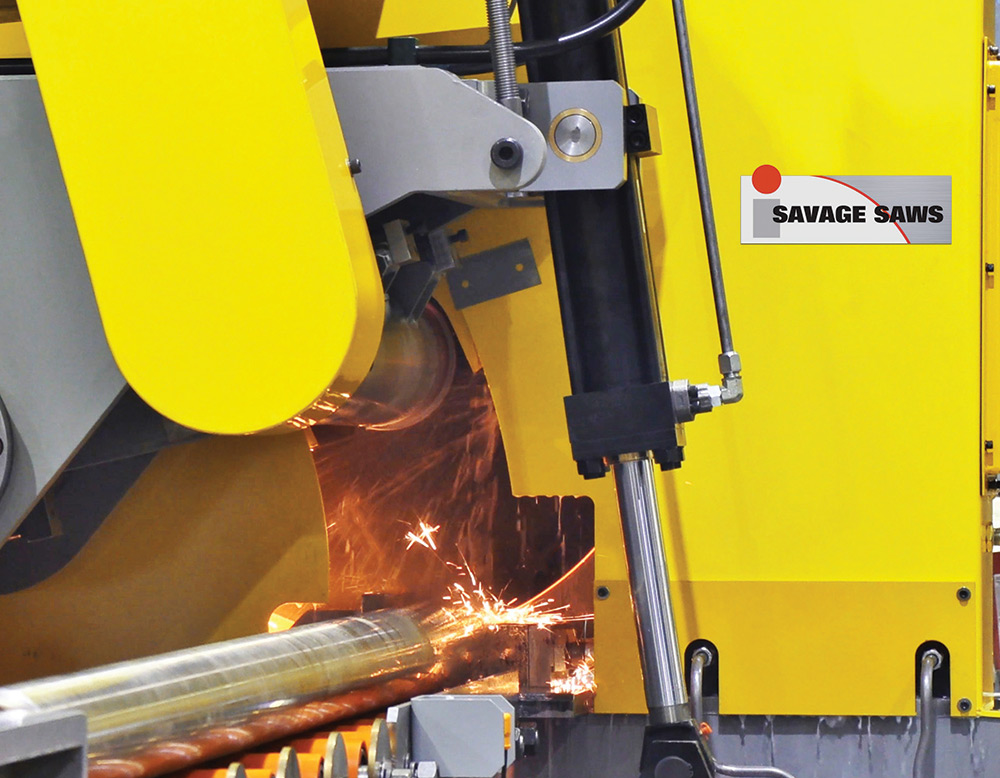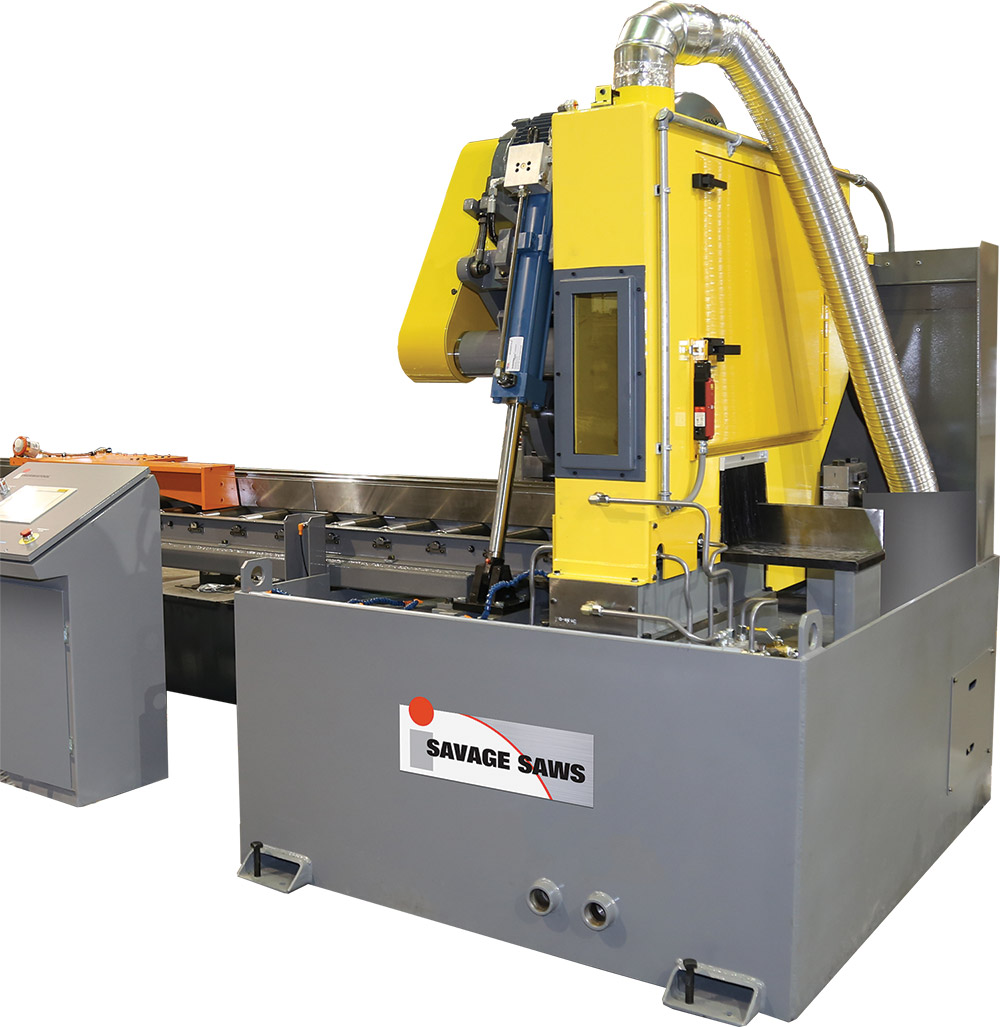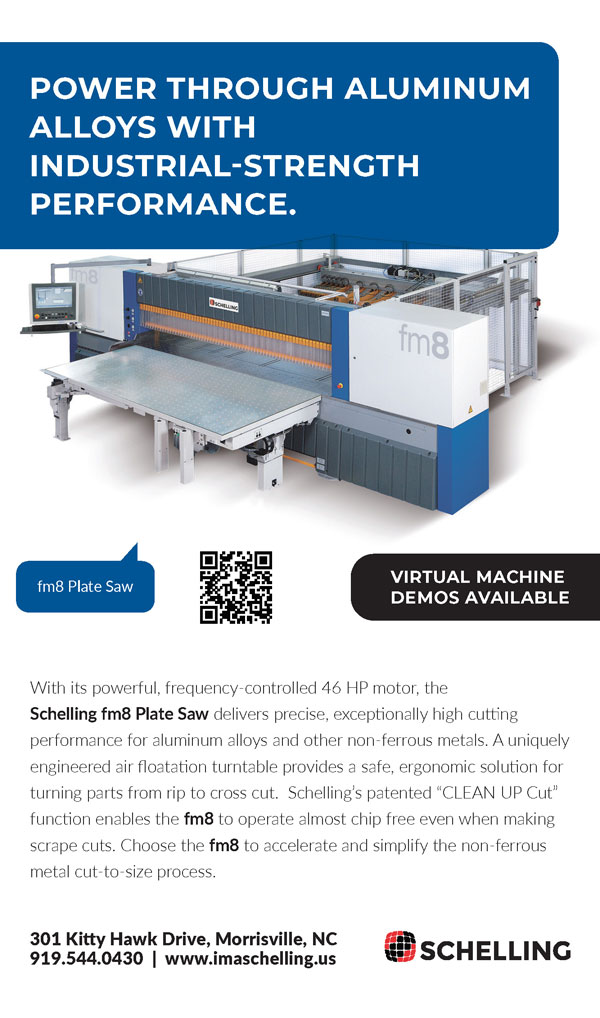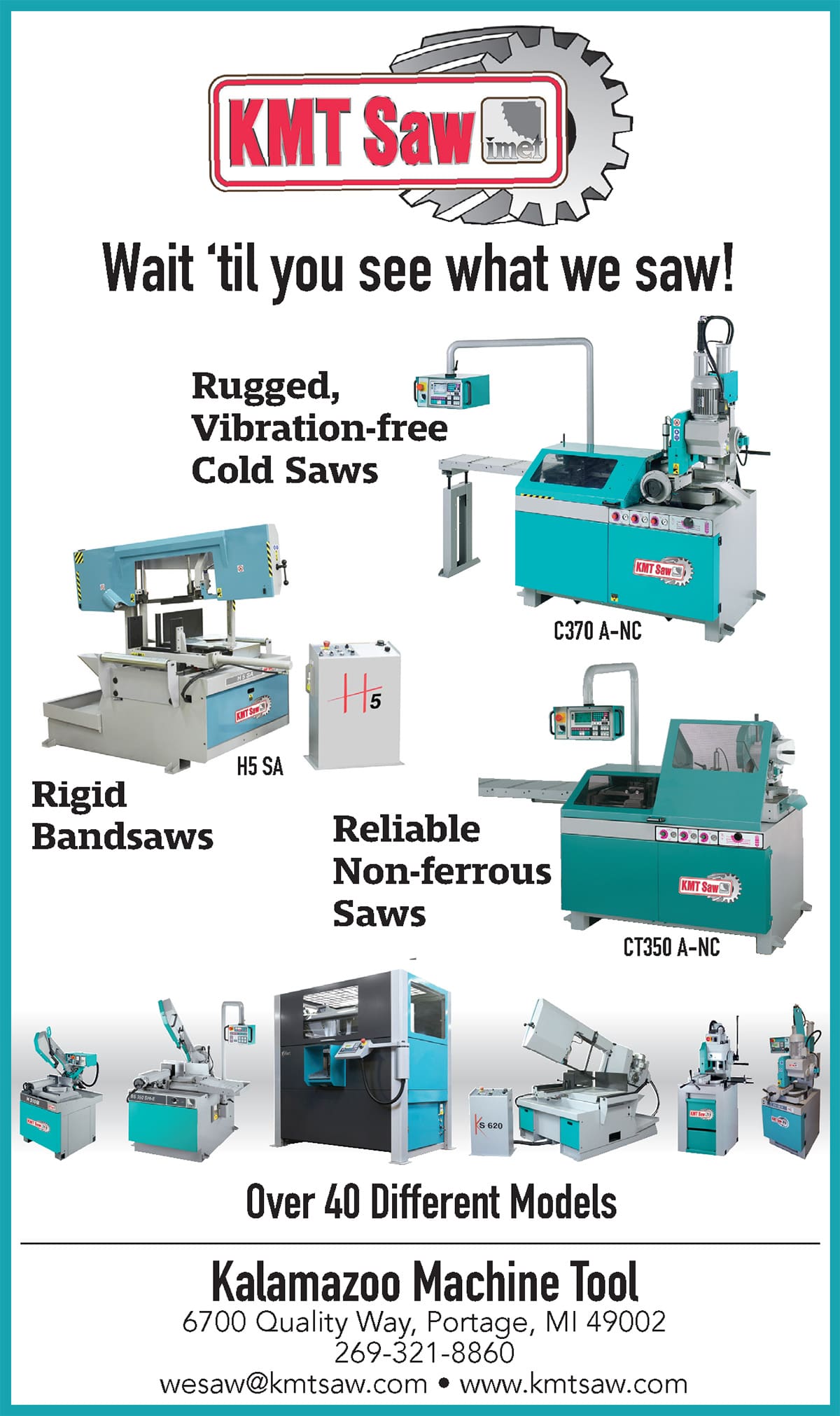sawing/cutting
avage Saws, a division of Thermatool Corp., which itself is an Inductotherm Group company, has built saws for very specific metal-cutting operations since the 1800s. Versatility is a key ingredient in the saw-building recipes developed by Savage Saws.
Feed rates, material dimensions, hardness, coolants, speed, blade diameter and other variables are what customers must consider when selecting a saw that best suits their application, according to Mike Abbas, director of engineered systems and cutting products at Thermatool Corp.
Abbas says Savage Saws machines add value. “[They] are built for production and, with our many equipment features and options, we are set far apart from competitors.
“Competitors use air-over-oil cylinders to move the feed, which is manually operated. Many are limited to manual material clamping, using a vise, and the saw offers only one speed. It does not give you a lot of productivity,” Abbas says.
“Our saws have a human-machine interface, so the operator can monitor the equipment and program the cuts. The operator has the ability to enter the recipe, feed and speed. The power cabinet has a variable frequency blade drive, and the console has a programmable logic controller. It also uses a servo valve for smooth operation and a linear transducer for blade position feedback.”
There are major incentives with these saws, Abbas says. “With the aforementioned options, users can vary the blade speed surface feet per minute (SFPM) and feed rate motion. With the hydraulic unit, a servo valve controls the feed rate motion. “As the blade wears and its diameter is reduced, the surface velocity decreases; our saws automatically adjust the blade diameter and motor speed to maintain a constant SFPM. This is very important, and our customers understand its benefits.”
The variable frequency drive communicates via ethernet with the PLC, sending the following parameters: amperage, voltage and horsepower. With continuous monitoring of these values, the saw can determine if the horsepower has reached a pre-programmed threshold limit.



 OUR SAWS AUTOMATICALLY ADJUST THE BLADE DIAMETER AND MOTOR SPEED TO MAINTAIN A CONSTANT SFPM.
OUR SAWS AUTOMATICALLY ADJUST THE BLADE DIAMETER AND MOTOR SPEED TO MAINTAIN A CONSTANT SFPM. 
The material removal rate varies through the cut due to the change in the material cross-section. To maintain a constant material removal rate, the feed rate must be adjusted. Savage Saws are able to do so. The spindle, which is the heart of the machine, is robust and reliable, built using the highest quality of standards, Abbas says.

- The guillotine saw handles specialty alloys, hardened steel bars or shapes in a high- production environment, using both dry and wet abrasive cutting techniques. This series will cut up to a 10-inch-diameter billet or 10-inch-square bar.
- The plate bridge and plate gantry saws will cut stainless steel or other specialty alloys in a high production environment using both dry and wet abrasive cutting techniques. The plate saw will cut up to a 12-inch-thick plate, up to 144 inches long.
- The lab saw (or metallurgical saw), allows customers to cut lab samples within a production environment or large or irregular work pieces up to 8 inches high by 24 inches long.
- The super saw cuts nickel-based alloys, tool steel, stainless steel and titanium bars for precision weight forging molds, ERS and VAR end trimming, and other applications. This series will cut up to an 18-inch-diameter billet or 16-inch-square bar.
- The foundry saw can break down casting trees or large specialty castings or handle small broken-down gate systems or investment castings.
- The rotator saw cuts ESR and VAR electrodes from 10 to 30 inches.
For example, Allvac, a division of Allegheny Technologies Inc. (ATI), makes billets for the Dreamliner. The metals included in these billets are Inconel, titanium and other high-tensile strength materials. ATI cuts round billets, Alcoa cuts aluminum billets and plates, and Timet cuts titanium plates using Savage Saws equipment.
Crucible Industries, which produces high-speed, stainless and tool steels, was able to replace up to eight bandsaws with one Savage Saws machine. “Once this saw became operational, they took out all of the bandsaws except one,” says Abbas. “That freed up a lot of floor space for other processes, shipping and even inventory.”

With a complete sawing system from Savage Saws, an operator can place a billet onto the loading table, program the cut length required and then start the cycle. The material is loaded onto the feeding conveyor where the saw will crop the front of the billet, then cut to a programmed length. An optional crop reject feature is also available. The cut billet moves via an outfeed conveyor and onto a cradle for packaging. The operator does not have to be occupied 100 percent of the time on the saws. That frees up labor to be used on higher value-added tasks, Abbas says.


